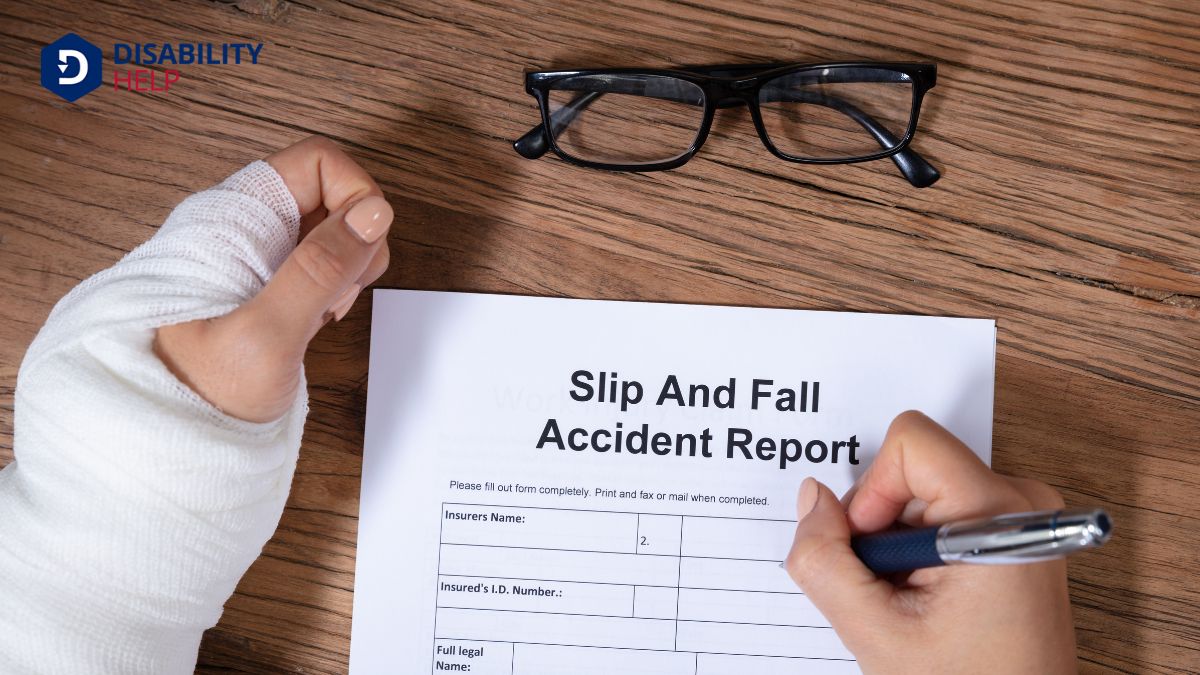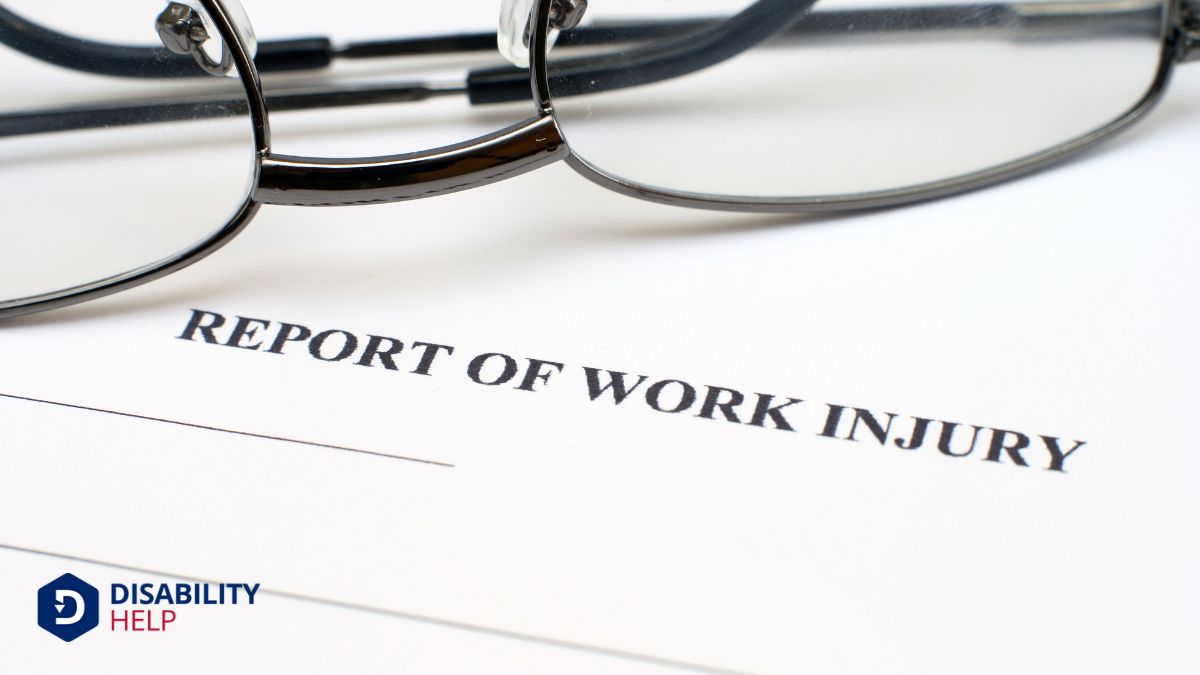As we navigate the process of filing for workers' compensation claim coverage, it's vital we grasp each step to make certain our claim is successful. We commence by promptly reporting the injury to our employer, providing a detailed account of the incident. Next, we'll need to reach out to the Division of Workers' Compensation for guidance and to obtain the required claim packet. Precision in filling out forms and attaching medical documentation is pivotal. But what happens after submitting the claim? Let's delve into the following steps and resources that are accessible to us to see how this process works efficiently.
Key Takeaways
- Report the injury to your employer within 30 days to maintain eligibility.
- Contact the Division of Workers' Compensation at 800-252-7031 for assistance and claim packets.
- Obtain and accurately complete the Employee Claim for Compensation form, attaching necessary medical documentation.
- Use the TXCOMP system to manage your claim, upload documents, and verify doctor certifications.
- Consult with workers' compensation lawyers for guidance and ensure timely submission of all forms and documentation.
Reporting the Injury

Frequently, the first important step after a workplace injury is to report it promptly to your employer. We need to make sure that our report is detailed, outlining the nature of the injury or illness. This accuracy is vital as it sets the groundwork for the workers' comp claim process.
The urgency can't be emphasized enough; reporting the injury within 30 days is essential to maintain our eligibility for workers' comp benefits. Missing this window can jeopardize our ability to receive the support we need.
When we report the injury, our employer will guide us through the necessary paperwork and steps to file a claim effectively.
Starting the claim process promptly not only helps document the incident accurately but also increases our chances of receiving timely benefits. These benefits can help cover medical expenses and compensate for lost wages while we recover from our work-related injuryAn injury that occurs in the course of employment, potentially leading to temporary or permanent dis....
Contacting the DWC
After reporting our injury to our employer, our next step involves contacting the Division of Workers' Compensation (DWC) for further assistance with our claim. The DWC plays a vital role in regulating workers' compensation benefits in Texas and helps resolve disputes between employees, insurance carriers, and employers. To reach them, we can call 800-252-7031 and select option 1.
When we contact the DWC, they'll guide us through the process and send us the specific documents we need to file our workers comp claim form. It's important we provide accurate information about our work-related injury or illness to secure our claim is processed smoothly. Remember, while the DWC oversees the system, they don't pay out benefits; that responsibility lies with the insurance carriers.
Beyond handling claims, the DWC also offers resources for workplace safetyThe policies and practices in place to ensure the physical and mental well-being of all employees, i..., which can help prevent future injuries. If we encounter any issues or need to file a complaint, contacting the DWC at the same phone number is our best course of action.
Getting the Claim Packet
Once we've reported our injury to our employer, the next step is obtaining the claim packet from the Texas Department of Insurance Division of Workers' Compensation (DWC). This packet is essential for us to progress with our workers' compensation claim. After reporting the injury, the DWC will send us a packet that contains specific forms and detailed instructions.
Among these forms, we'll find the Employee's Claim for Compensation for a Work-Related Injury or Occupational Disease. This form must be filled out accurately and thoroughly to guarantee we receive the appropriate Texas workers' compensation benefits.
If we don't receive the DWC packet within a reasonable time, or if we need any assistance with our claim, we should contact the DWC directly at 800-252-7031, option 1. They can provide guidance and make sure we've all the necessary documents.
Filling Out Forms
Filling out the necessary forms is a vital step in our workers' compensation claim process. Specific forms, like the DWC Form-041 and Employees Claim for Compensation, are essential. Properly completing these forms secures our eligibility for Texas workers' compensation benefits. Let's break down the key steps to make this process smoother for everyone involved.
- Gather Information: Start by collecting all relevant details about the injury or illness. This includes when and how it happened, the medical treatment received, and any work-related factors contributing to the incident.
- Accurate Completion: Every Form requires accuracy. Verify that all personal and employment details are correct. Mistakes can delay our claims and affect our benefits.
- Medical Documentation: Attach all necessary medical records and documents. These provide evidence of the injury or illness and are crucial for validating our workers' compensation claims.
- Review and Submit: Before we submit, double-check everything. Confirm that all sections of the Form are filled out accurately and completely. Missing information can impede the processing of our claim.
Submitting the Claim

Now that we've filled out the forms let's cover the important steps for submitting the claim.
We need to report the injury to our employer within 30 days and make sure that all necessary paperwork, including the DWC Form-041, is accurately completed and mailed.
Proper submission is vital because it affects our claim's approval and access to benefits.
Filing Necessary Paperwork
Getting your workers' comp claim started requires submitting the right paperwork promptly. Filing for workers' comp coverage involves several steps, and one of the most important is completing the required forms accurately.
To begin, we need to focus on the Employee Claim for Compensation form. This form, known as DWC Form-041, is provided by the Texas Department of Insurance Division of Workers Compensation. Here's a step-by-step guide to help us navigate the claim process:
- Obtain the Forms: The Texas Department of Insurance Division of Workers Compensation will give us a packet containing the necessary forms and instructions. Make sure we have the DWC Form-041 ready.
- Complete the DWC Form-041: Fill out the Employees Claim for Compensation form diligently. Accurate and thorough information is vital to avoid any delays in processing our workers' comp claim.
- Mail the Form: Once the DWC Form-041 is completed, mail it to the Division. This step is important to initiate our claim process and access Texas Workers' Compensation benefits.
- Track Your Claim: Keep copies of all submitted claim paperwork and track the progress of our claim to make sure everything is moving smoothly.
Reporting Injury Timely
Having completed the necessary paperwork, our next step is reporting the injury promptly to guarantee our claim is processed smoothly. It's important to report your work-related injury to your employer within 30 days. Missing this window might lead to a denial of benefits.
After informing your employer, we need to file a claim within one year of the injury or illness to secure our eligibility for Texas Worker's Compensation benefits.
The Texas Department of Insurance Division of Workers Compensation will send us a packet containing the necessary forms and instructions once the injury is reported. Among these forms is the Employees Claim for Compensation form (DWC Form-041). Completing and submitting this form is vital for initiating the process of filing for workers compensation benefits.
Understanding Claim Approval
Understanding claim approval is an essential step in securing workers' compensation benefits. When we submit a claim form, the insurance carrier reviews it thoroughly to decide on approval or denial. This process determines whether we'll receive the benefits we need or face a denial of our claim.
To increase our chances of getting approval, it's important to submit accurate and complete paperwork. Here's how we can guarantee our claim form meets the necessary standards:
- Detail Every Incident: Be specific and thorough when describing the injury and how it occurred. The insurance carrier needs a clear picture to make an informed decision.
- Include Medical Reports: Attach all relevant medical documentation that supports our injury claim. These reports are crucial for validating the severity and cause of the injury.
- Timely Submission: Ensure we submit the claim form within the required timeframe. Late submissions can lead to automatic denial.
- Follow-up: After submitting the claim, follow up with the insurance carrier to confirm receipt and address any additional questions they might have.
DWC Assistance
Now, let's explore how the Division of Workers Compensation (DWC) can assist us with our claims. They provide valuable support and specific documents to help us navigate the claim process.
For any disputes or additional guidance, we can call DWC at 800-252-7031, option 1.
Filing Assistance Provided
Exploring the intricacies of filing a workers compensation claim can often be overwhelming, but the Division of Workers Compensation (DWC) is here to help. When we need to file for workers compensation, DWC offers essential filing assistance to guarantee our claims are handled correctly and efficiently. Their support covers everything from providing the necessary documents to guiding us through the claim filing process.
To make things clearer, here's how DWC can assist:
- Filing Paperwork Assistance: DWC can help us complete all the required paperwork accurately to avoid delays or errors in our worker's compensation claim.
- Claim Filing Support: By calling 800-252-7031, option 1, we can speak to a knowledgeable representative who can answer our questions and guide us through each step.
- Specific Documents and Instructions: DWC can provide us with detailed instructions and specific documents needed for filing our claim.
- Guaranteeing Correct Filing: Their guidance helps guarantee that we correctly file our claim for workers' compensation benefits, increasing the chances of a smooth and successful process.
Claim Process Guidance
While DWC's filing aid is invaluable, their support doesn't end there. The Division of Workers Compensation (DWC) offers extensive guidance throughout the entire worker's compensation claim process. Once we've reported our injuries to our employer promptly, DWC steps in to guarantee we follow the correct procedures. It's vital to adhere to their guidelines to streamline our claims and avoid unnecessary delays.
For personalized assistance, we can call DWC at 800-252-7031, option 1. They provide us with specific documents and support to help us navigate the complexities of the claim process.
Although DWC regulates workers compensation benefits in Texas, they don't directly pay out benefits; that's handled by our insurance carriers. Understanding this distinction helps us know where to direct our questions about payments and medical treatment.
Moreover, DWC acts as a mediator when disputes with insurers arise. If, for example, our claim is denied or delayed, DWC can step in to resolve these issues, ensuring we receive the benefits we're entitled to. Their role in mediating disputes with insurers and employers is essential for protecting our rights and securing our worker's compensation benefits efficiently.
Insurance Decision
Choosing the right insurance carrier for workers' compensation is an important decision that affects both employers and employees. The insurance decision we make determines how smoothly the claims process will run. Remember, it's the insurance carriers who pay workers' compensation benefits, not the Division of Workers Compensation. Here are a few key points to keep in mind:
- Responsibility of Payment: It's vital to choose a workers comp insurance carrier that has a stellar reputation for paying claims promptly once the claim is approved. This directly impacts the financial well-being of injured employees.
- Prompt Reporting: Employees should report work-related injuries to their employer immediately. This initiates the claims process, ensuring that the need to file doesn't get overlooked and the claim can be processed efficiently.
- Filing Requirements: Filing a claim with the Texas Department of Insurance Division of Workers Compensation is essential. Completing the DWC Form-041, Employees Claim for Compensation, and submitting a medical report is a necessary step.
- Eligibility Timeline: Make sure to file the claim within one year of the injury. Missing this deadline can result in the loss of eligibility for benefits, an important aspect for both small businesses and larger employers.
Returning to Work
Now that we've covered the insurance decision, let's discuss returning to work after a workers' comp claim.
We'll explore how a gradual reintegration, planning for modified duties, and monitoring recovery progress can help guarantee a smooth shift.
Effective communication between the employee, employer, and healthcare provider is essential for making this process successful.
Gradual Work Reintegration
Gradual work reintegration is vital for assisting injured employees in easing back into their roles effectively. This process of returning to work involves reducing hours or performing lighter duties as they recover. By making necessary adjustments, employers can support employee recovery, boosting morale and productivity while minimizing the risk of re-injury. Gradual work reintegration is a critical part of a successful workers' compensation claim.
To ensure a smooth handover, we should focus on the following steps:
- Assessment of Capabilities: Evaluate the employee's physical and mental capacities to determine suitable tasks and work hours. This step guarantees that the employee isn't overburdened, promoting better recovery.
- Clear Communication: Maintain open lines of communication between the employer, employee, and healthcare providers. This helps everyone stay informed about progress and necessary adjustments.
- Flexible Scheduling: Implement a flexible work timetable that allows the employee to gradually increase their working hours. This reduces stress and aids in a smoother return to full duties.
- Regular Monitoring: Continuously monitor the employee's progress and adjust tasks or hours as needed. This proactive approach ensures ongoing support and reduces the likelihood of setbacks.
Modified Duties Planning
While gradual work reintegration plays an essential role in an employee's recovery, planning for modified duties is another vital component of their successful return to the workplace.
Modified Duties Planning involves creating temporary job tasks for injured workers, tailored to their medical restrictions. By collaborating with healthcare providers, we can outline these duties to guarantee the safety and well-being of the employee.
This approach helps injured workers reintegrate into the workforce gradually without compromising their recovery process.
Effective communication is important during this period; we need to clearly explain the modified duties to the employee and make sure they understand their temporary role. This not only promotes employee safety but also helps in reducing lost productivity and absenteeism.
Monitoring Recovery Progress
Monitoring the recovery progress of injured employees is important for guaranteeing they can safely return to work. As employers, we must actively track their recovery progress to determine when they're ready to resume their duties. Collaborating with healthcare providers is essential to support the injured employee's journey back to work. Here's how we can effectively monitor and manage their recovery:
- Regular Check-Ins: Schedule consistent meetings with the injured employee and their healthcare providers to stay updated on their recovery progress. This helps them make informed decisions about their return-to-work timeline.
- Customized Recovery Plans: Work with healthcare providers to develop tailored recovery plans that address the specific needs of the injured employee. This ensures they receive the necessary care and accommodationsModifications or adjustments in healthcare settings to support patients with disabilities..
- Documentation: Keep detailed records of the employee's recovery milestones and any recommendations from healthcare providers. This documentation is important for compensation purposes and for tracking their return-to-work readiness.
- Flexible Work Options: Offer modified duties or flexible work schedules to facilitate a smoother shift back to work. This minimizes the duration of absence and supports the injured employee's ongoing recovery.
Using TXCOMP

Browsing TXCOMP, Texas's automated system for accessing non-confidential workers' compensation information, can streamline the process of managing reports and doctor appointments. By creating a profile on TXCOMP, we can easily file a claim within the platform, whether for individual reports or bulk filings. This system simplifies our experience, allowing us to handle aspects of Texas worker's compensation efficiently.
Once our profile is set up, we can upload necessary documents in accepted formats such as Word, Excel, PDF, and TIFF. It's vital to adhere to the specific size and naming requirements to guarantee smooth processing.
TXCOMP also provides a centralized platform to verify doctor certifications and manage our designated doctor appointments. This ensures that all actions required by the Division of Workers Compensation and our insurance provider are fulfilled seamlessly.
Additionally, TXCOMP is invaluable for reporting coverage information for self-insured governmental entities, making the entire claims process more transparent. By leveraging this automated system, we can navigate the complexities of workers' compensation insurance with greater ease and confidence.
Utilizing TXCOMP helps us stay on top of our obligations and reduce the administrative burden, making sure that we meet all necessary deadlines and requirements efficiently.
Additional Resources
To steer through the intricacies of filing a workers' compensation claim, a variety of additional resources are at our disposal. Utilizing these resources can greatly ease the process and guarantee that we meet all required prerequisites.
- Texas Department of Insurance Division of Workers Compensation: This organization provides essential assistance and guidance. Their website contains detailed information on the claims process and eligibility for benefits, helping us comprehend the steps involved.
- DWC Form-041: Completing and mailing this form, the Employee Claim for Compensation, is vital to kickstart the claim process. Timely reporting of injuries is necessary to avoid losing eligibility for benefits. Make sure to fill out the form accurately to prevent delays.
- Workers' comp lawyers: Consulting with experienced attorneys can provide clarity on our rights and options. They can help in maneuvering the complexities of claim paperwork and guarantee that insurance carriers receive all necessary documentation. You can reach out to them at 888-434-COMP.
- Timely Reporting and Proper Documentation: Ensuring timely reporting and meticulously completing claim paperwork is crucial. Insurance carriers examine every detail, so accuracy is essential to a successful claim.
Frequently Asked Questions
What information do I need to provide when filing a workers' compensation claim?
When filing a workers' compensation claim, you'll need to provide details of the incident, including the date, time, and circumstances of the injury or illness. You may also need to include medical records, a list of witnesses, and documentation from your doctor regarding your treatment and work restrictions.
Who is responsible for filing the workers' compensation claim?
While you are responsible for reporting the injury or illness to your employer, the actual claim is typically filed by your employer to their workers' compensation insurance carrier. However, it's important to follow up to ensure that the claim is filed timely.
What should I do if my employer refuses to file a workers' compensation claim?
If your employer refuses to file a claim, you can file the claim directly with the state workers' compensation board or commission. It is crucial to be aware of your rights and the specific procedures in your state, as these can vary significantly.
How long does it take to receive benefits after filing a workers' compensation claim?
The time it takes to start receiving benefits after filing a workers' compensation claim can vary. Once the claim is filed, insurers typically have a set period (often around 14 to 30 days) to either accept or deny the claim. If approved, benefits should start shortly thereafter. If the claim is contested, it may take longer due to the need for additional investigation or a hearing.
Conclusion
Let's cover all our bases to get the compensation we deserve. By promptly reporting the injury, contacting the DWC, obtaining and accurately filling out the claim packet, and using TXCOMP, we'll streamline the process. Don't forget to attach all relevant medical documentation and seek guidance if needed. Together, we can navigate this system and secure a successful claim. Remember, timely and thorough action is key to our recovery and return to work.






